The Best Deals on Camping, Backpacking and Outdoor Gear [June 2025]
You know w’re all about barefoot shoes here at Terradrift. We love barefoot adventure sandals, barefoot trail runners, and absolutely waterproof barefoot hiking boots. So when Xero Shoes dropped their shiny new Scrambler Mid II Waterproof (it’s brand new this week) we had to test out a pair to see just how barefoot–and waterproof–they really are.
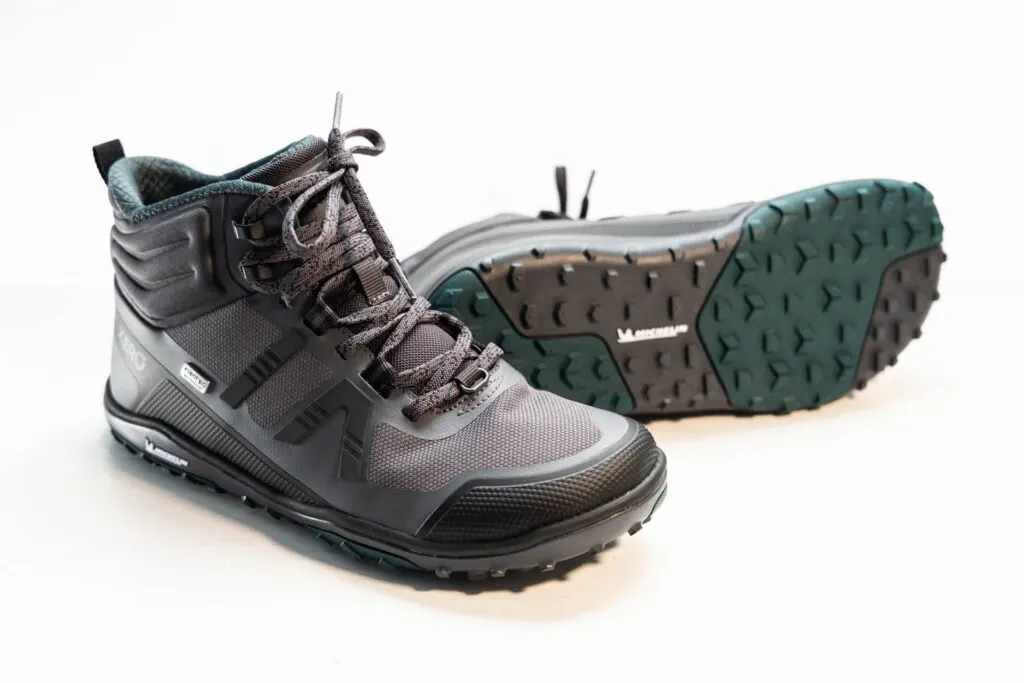
The Xero Scrambler Mid II Waterproof: The Deets
First things first: what makes the Xero Shoes Scrambler Mid II WP barefoot hiking boots so special?
- It’s breathable
- The super grippy Michelin tech sole, which makes it super grippy on slick surfaces
- It’s lightweight–a Women’s size 7 is just 10 ounces
- The zero drop sole
- Nice roomy toe box
- It’s waterproof (thanks to eVent technology)
- Vegan
- Totally PFAS-free.
The boots have a stack height of 11.5 millimeters, which includes 3 millimeter lugs, foam, sole and removable insert. The uppers, including this rugged toe cap, feel really durable, as do the soles, which, they should, because they come with Xero’s classic 5,000-mile warranty, which is awesome, because it means these shoes won’t need replaced for a long time.
They are just available in variations of black and grey: one option for men, one for women. And they are available in Xero’s typical wide rage of sizes (6.5-15 for men, 5-12 for women), which is great.
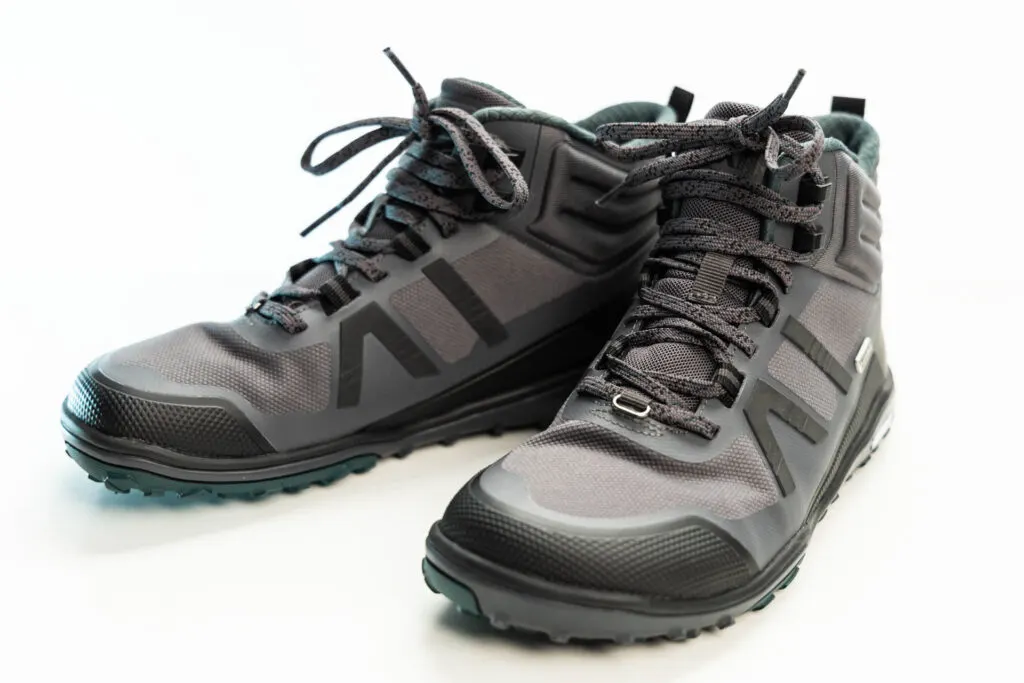
The Xero Scrambler Mid 2 Review (Waterproof Edition)
Now, I’ve reviewed this shoe’s predecessor before, the Scrambler Mid, which isn’t waterproof, and it honestly wasn’t my favorite. Largely because I just don’t care for a boot-style hiking shoe unless it’s cold, and the original Scrambler Mid is very breathable, so it’s not for chilly weather or snow, so I just wasn’t a fan. I’d rather hike in low-profile barefoot shoes or hiking sandals.
But once you tweak the boot a bit and add a waterproof membrane, well, now we’re talkin’! That said, I was a bit worried about how the eVent waterproof membrane would perform because we’ve tested shoes with it before, and performance has been hit or miss. But it seemed to work great in these boots.
I mean, I stomped across creeks, stood in running water, hiked in snow–with and without snowshoes–and they kept my feet dry every time.
The boots specifically utilize the eVent Bio membrane, which is supposed to be more sustainable because it’s partially made from bio-based materials. To be exact, 24.7% is derived from pulp and wood waste (eVent says they’re on track to up that to 60% within a few months).
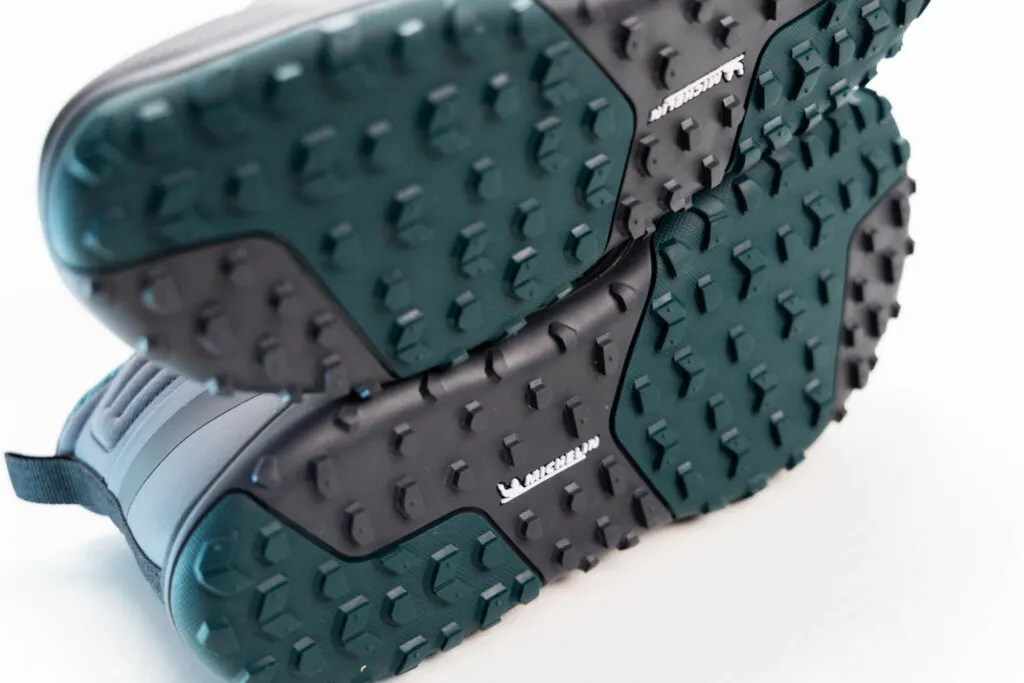
But tech aside, let’s talk about how the boot performed on the trail. Honestly, when I first picked these up, I thought I’d have the same problem I had with the original Scrambler Mid, by which I mean the sole feels kinda stiff for a barefoot shoe.
And yeah, they weren’t as flexible as maybe a barefoot sandal or summer hiking boot is gonna be, but honestly, when I compared them to other minimalist and barefoot waterproof boots, they were actually some of the most flexible. And the toe box was plenty roomy.
But not so flexible that I couldn’t wear them with microspikes or snowshoes. And yes, they did keep my feet warm enough on winter hikes when temps were around freezing. Not that they’re billed as winter boots, mind you, and they wouldn’t be suitable for truly frigid conditions, but for day hikes on sunny winter days? Heck yeah.
Bottom Line
Am I gonna hike in the Xero Scrambler Mid II WP in the summer? Well, no, probably not unless I’m planning some alpine scrambling, but that’s because I prefer to wear as little fabric on my feet as possible when it’s warm out (and I’ll just bring Xero sandals for extended creek crossings).
But these might just be one of my new go-to cool- to cold-weather hiking boots, especially if frequent water crossings or snow is involved. I appreciate the flexibility when compared to other waterproof boots and they’re comfy with a wide enough toe box to give my toes space to breathe. So they get a big thumbs up in my book.
What do you think? Would you give these a go? Have any questions about ‘em that we didn’t answer? Ask away! Then get out there and wander on already. Ideally in barefoot shoes.
Want more barefoot waterproof hiking boot reviews? Check out our comparison of the Xero Scrambler Trail Mid WP and the Vivobarefoot Tracker Textile AT!

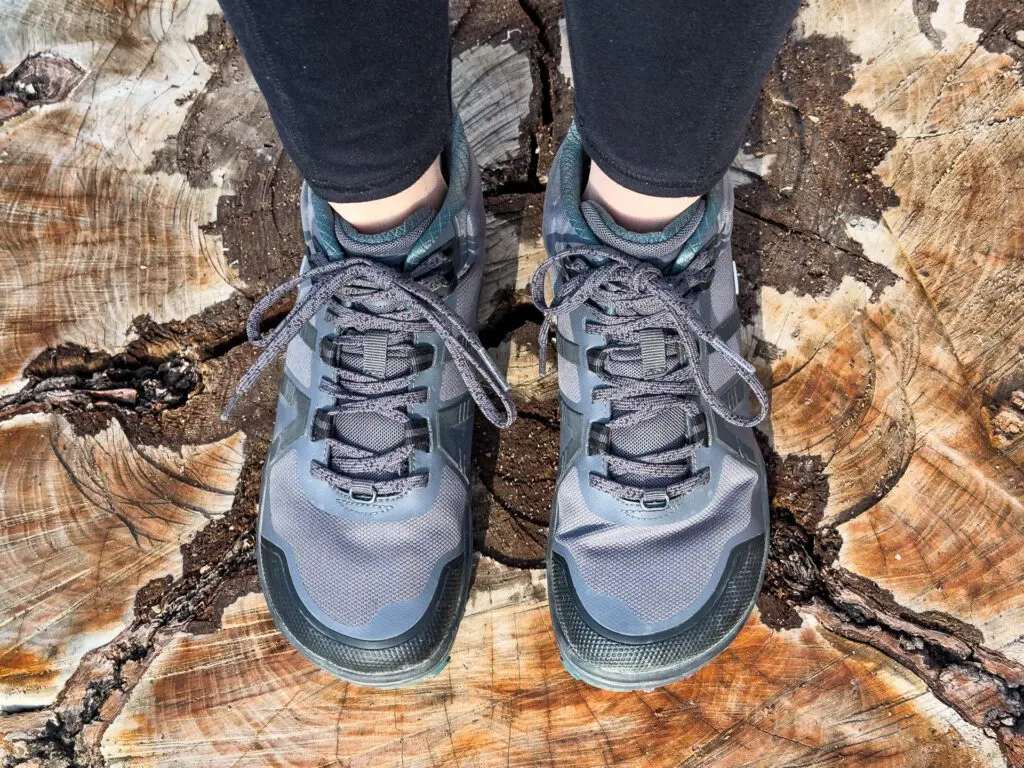
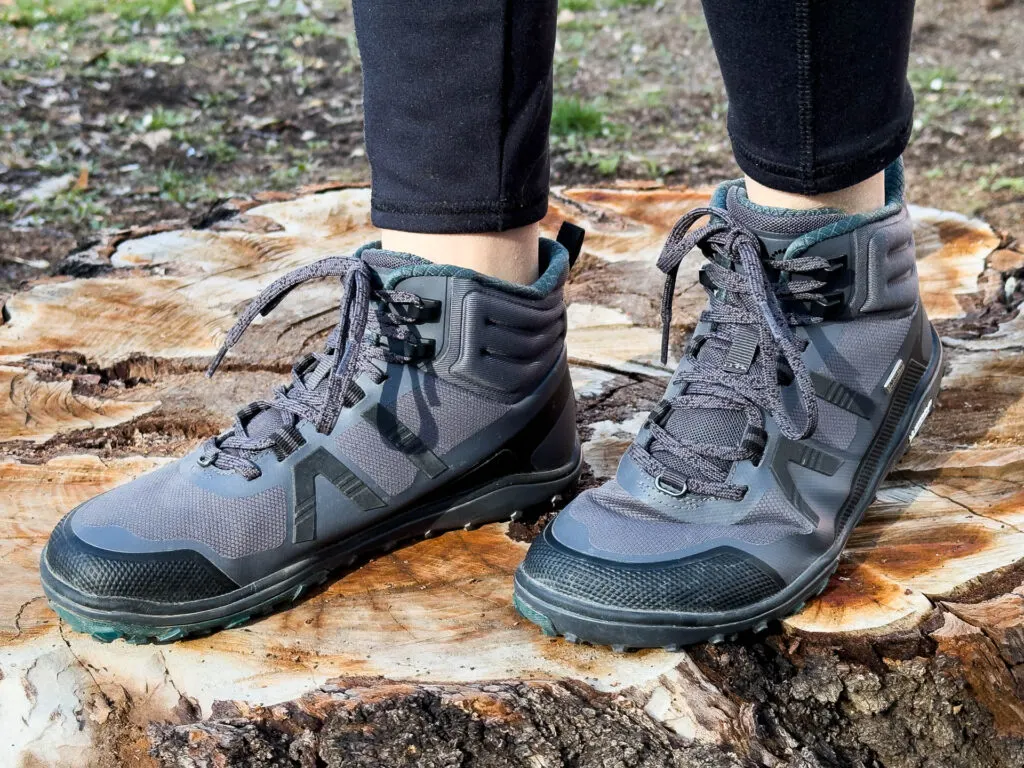
Ashlyn
Friday 28th of June 2024
Do you think these would make good work boots? I know they’re not safety boots as such, but comfort wise and durability? Thanks for your time
Alisha McDarris
Tuesday 2nd of July 2024
Hi, Ashlyn! I guess that depends on the work you're doing. The soles are certainly durable (that 5,000-mile warranty is for real), but I'd say if you're working with sharper tools or machinery, the uppers might wear a bit faster than boots made of a thicker, more robust material. That said, for a textile upper (i.e. not a solid, thick pleather or similar), they feel fairly substantial.